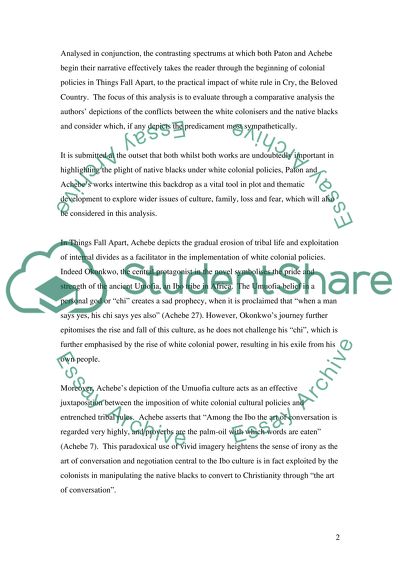Cite this document
(Compare and Contrast Alan Paton's Cry, the Beloved Country and Chinua Literature review, n.d.)
Compare and Contrast Alan Paton's Cry, the Beloved Country and Chinua Literature review. https://studentshare.org/literature/1545975-compare-and-contrast-alan-patons-cry-the-beloved-country-and-chinua-achebes-things-fall-apart
Compare and Contrast Alan Paton's Cry, the Beloved Country and Chinua Literature review. https://studentshare.org/literature/1545975-compare-and-contrast-alan-patons-cry-the-beloved-country-and-chinua-achebes-things-fall-apart
(Compare and Contrast Alan Paton'S Cry, the Beloved Country and Chinua Literature Review)
Compare and Contrast Alan Paton'S Cry, the Beloved Country and Chinua Literature Review. https://studentshare.org/literature/1545975-compare-and-contrast-alan-patons-cry-the-beloved-country-and-chinua-achebes-things-fall-apart.
Compare and Contrast Alan Paton'S Cry, the Beloved Country and Chinua Literature Review. https://studentshare.org/literature/1545975-compare-and-contrast-alan-patons-cry-the-beloved-country-and-chinua-achebes-things-fall-apart.
“Compare and Contrast Alan Paton'S Cry, the Beloved Country and Chinua Literature Review”. https://studentshare.org/literature/1545975-compare-and-contrast-alan-patons-cry-the-beloved-country-and-chinua-achebes-things-fall-apart.


